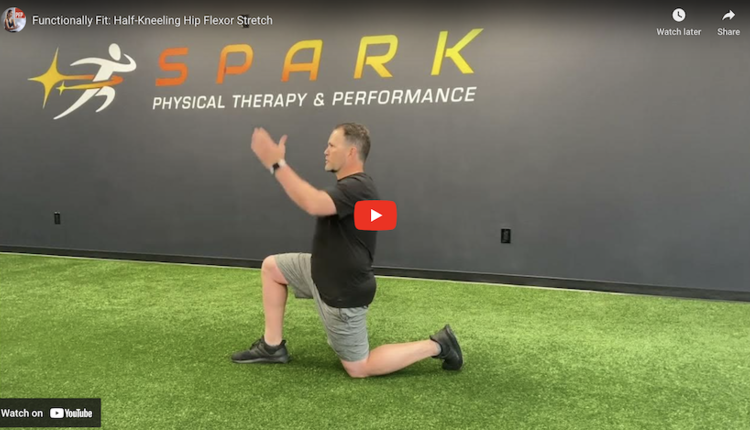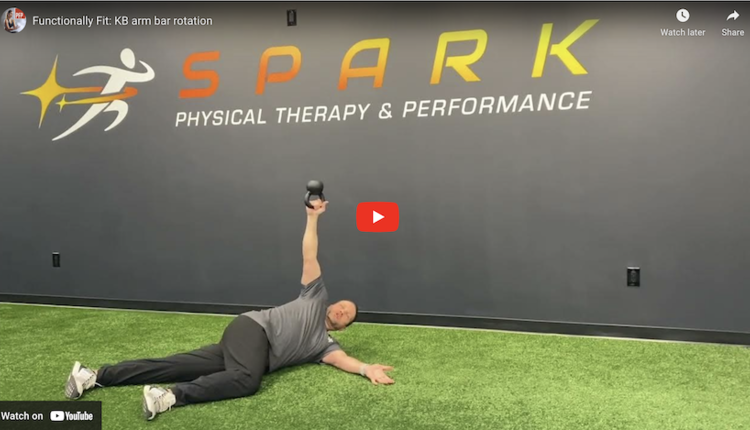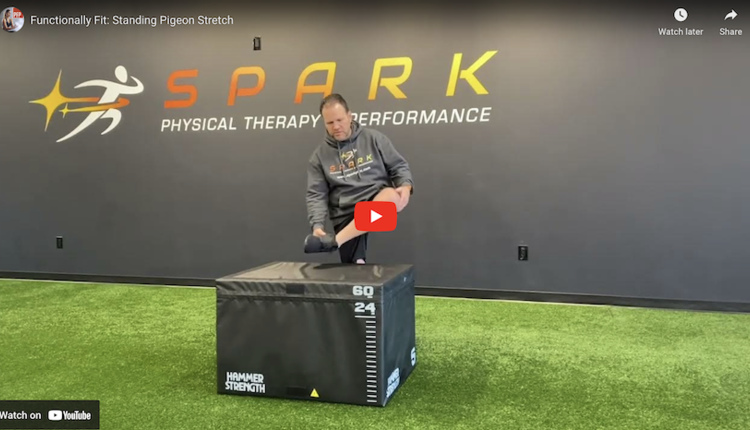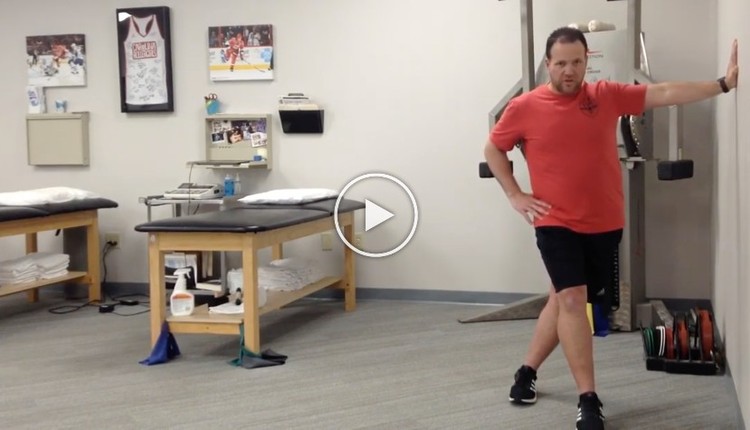
Poor rotary stability scores on the Functional Movement Screen can be related to a number of causes. I often see asymmetrical scores or simply poor movement patterns with clients recovering from an injury or surgery, who have adopted compensatory patterns or simply lack stability. This exercise offers a simple technique to help resolve asymmetry and optimize rotary stability using a kettle bell in the half kneeling position.

Execution: Begin in half kneeling with the left knee down on a foam pad and the right leg up. Grasp a kettle bell in the right hand, while holding it at shoulder height. Place the left hand on the outside of the right knee/distal thigh. Make sure the right foot is facing forward.
Next, position the spine in a neutral position (tuck pelvis under if needed to avoid hyperlordosis) and slowly rotate the trunk to the right as far as the body will comfortably move in the available range of motion. Do not force the motion or move through any pain.
Pause for 3-5 seconds at end range and return to the start position. Perform 3-5 reps each side. Be sure to keep the front leg still throughout. Do not force through any pain or stiffness. Emphasis should be on form and smooth quality movement at all times. Consider allowing clients to perform the exercise in front of a mirror for visual feedback.
Application: This exercise will facilitate thoracic spine mobility as well as improving rotary stability. It is ideal for those scoring poorly or demonstrating an asymmetry on the FMS, as well as for those with poor hip and torso strength/stability. A lighter weight and slower cadence is recommended. You can increase load for more advanced clientele, but the focus of this exercise is on controlled mobility and pillar stability, so do not be overly aggressive with the load or forcing end range of motion.




















